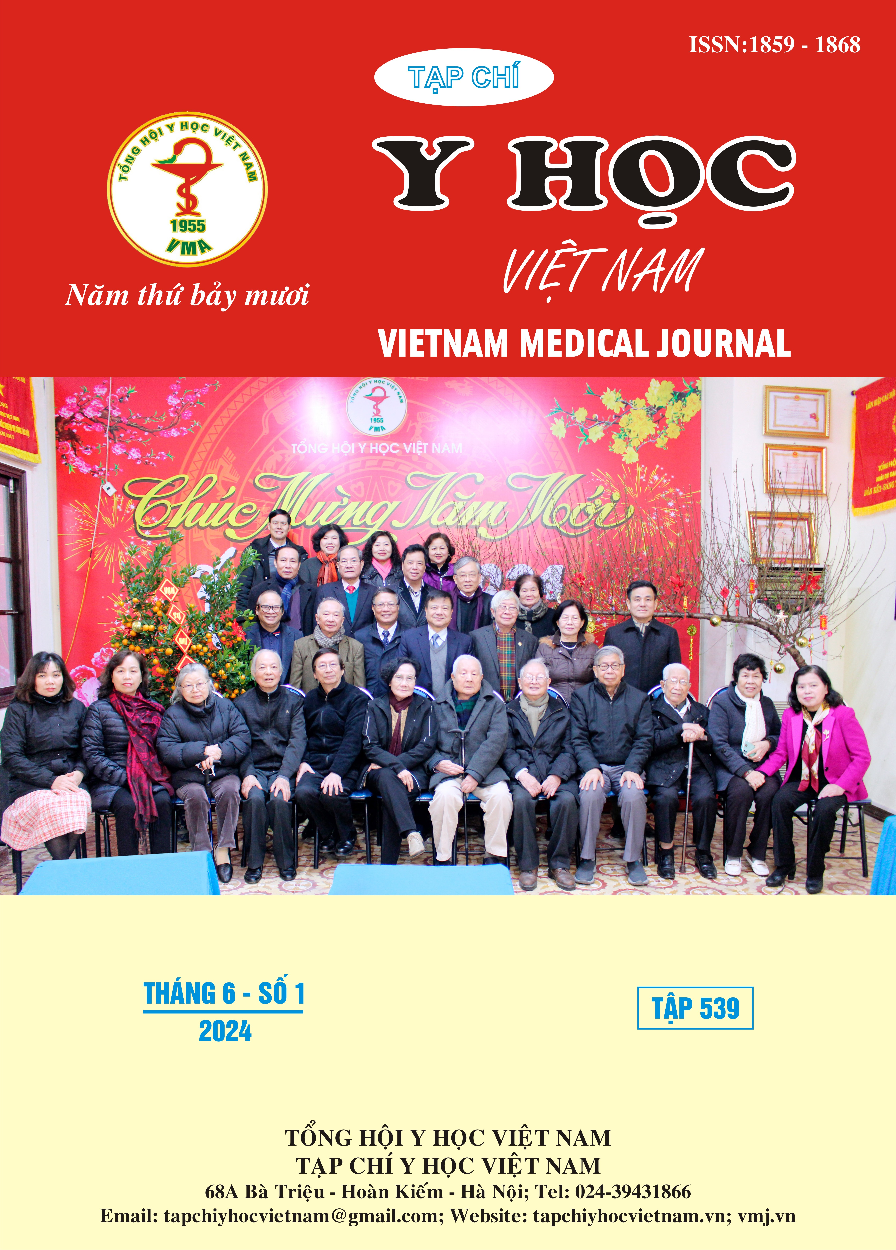CHARACTERISTICS OF HEIGHT IN CHILDREN WITH NEPHROTIC SYNDROME AT CHILDREN HOSPITAL 1
Main Article Content
Abstract
Introduction: Nephrotic syndrome (NS) is the most common glomerular disease in children. Long – term Steroid treatment can lead to serious side effects, the most important of which is stunting. In Viet Nam, there have been no study evaluating about characteristics of height in children with NS. Method: We performed a cross – sectional study of 126 children with NS at Children Hospital 1 from November 2022 to June 2023. Diagnotic criteria include 24-hour proteinuria > 50 mg/kg or uPCR > 200 mg/mmol. Elimination criteria include: (1) children with additional glomerular disease such as IgA nephropathy, SLE, glomerulonephritis due to infection or autoimmune; (2) children with conditions that affect height such as hypothyroidism, early puberty, malnutrition, Thalassemia… Children will have their standing height measured. They are instructed to take off their shoes before taking measurements. Ensure correct posture with 5 points touching the ruler (nape, shoulder blades, buttocks, calves, heels). The accuracy of measured height is up to 0,1 cm. Results: In 126 children, there were 23 newly diagnosed cases and 103 cases under treatment; there were 93 male and 33 female, the male/female ratio was 2,8/1; mean age at first diagnosis was 5,8 ± 3,9 years old; there were 70 cases that get kidney biopsy with 49 MCD (70,0%) and 21 FSGS (30,0%). In the children who were under treatment, the average time of using Steroid was 4,3 ± 4,0 years; there were 35 Steroid – sensitive cases (34,0%), 60 Steroid – resistant cases (58,2%) and 8 Calcineurin (CsA) – resistant cases (7,8%); there were 48 remission cases (46,6%) and 55 cases of no remission (53,4%). In the research group, there were 39 cases of stunting (31%); average duration of Steroid use in the stunted group was 5,6 ± 4,0 years, significantly higher than 3,7 ± 3,8 years in the normal height group (P = 0,02); stunting rate of children who used Steroid over 1 year was 36,9% significantly higher than 19,0% in children who used Steroid less than 1 year (P = 0,04); we also note that stunting rate was higher in children who have Cushing syndrome than in children who doesn’t (40,7% compared to 22,7%, P = 0,04) and stunting rate in children with pathology result of FSGS was higher than those with MCD (61,9% compared to 28,6%, P = 0,02). Conclusion: Stunting rate in the study group was 31,0%. Clinical and sub-clinical factors that affect stunting condition in children with NS are duration of Steroid use, Cushing syndrome and pathology result on kidney biopsy.
Article Details
Keywords
Nephrotic syndrome, stunting.
References
2. Donatti T. L., Koch V. H. (2009). "Final height of adults with childhood-onset steroid-responsive idiopathic nephrotic syndrome". Pediatr Nephrol, 24 (12), pp. 2401-8.
3. Emma F., Sesto A., Rizzoni G. (2003). "Long-term linear growth of children with severe steroid-responsive nephrotic syndrome". Pediatr Nephrol, 18 (8), pp. 783-8.
4. Göknar N., Webb H., Waters A., et al. (2021). "Long-term obesity prevalence and linear growth in children with idiopathic nephrotic syndrome: is normal growth and weight control possible with steroid-sparing drugs and low-dose Steroid for relapses?". Pediatr Nephrol.
5. Hung Y. T., Yang L. Y. (2006). "Follow-up of linear growth of body height in children with nephrotic syndrome". J Microbiol Immunol Infect, 39 (5), pp. 422-5.
6. Ribeiro D., Zawadynski S., Pittet L. F., et al. (2015). "Effect of glucocorticoids on growth and bone mineral density in children with nephrotic syndrome". Eur J Pediatr, 174 (7), pp. 911-7.
7. Simmonds J., Grundy N., Trompeter R., et al. (2010). "Long-term steroid treatment and growth: a study in steroid-dependent nephrotic syndrome". Arch Dis Child, 95 (2), pp. 146-9.


